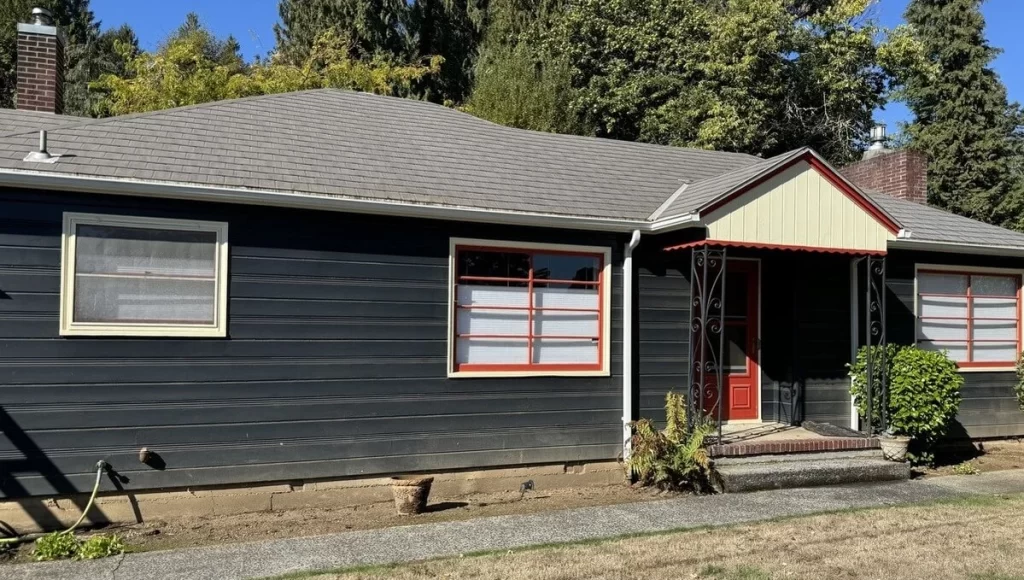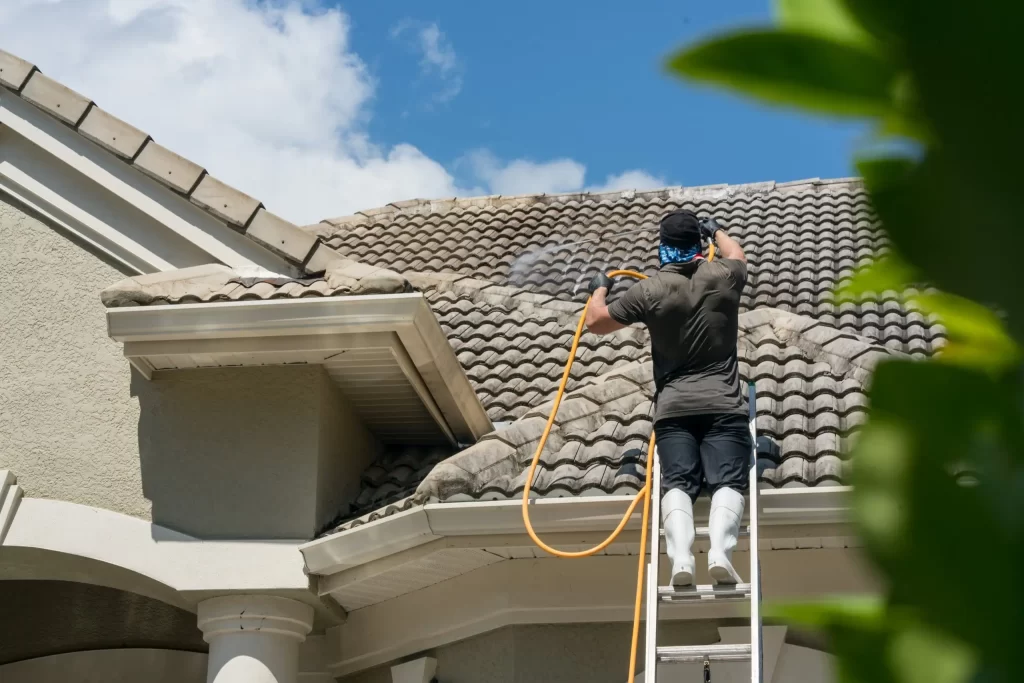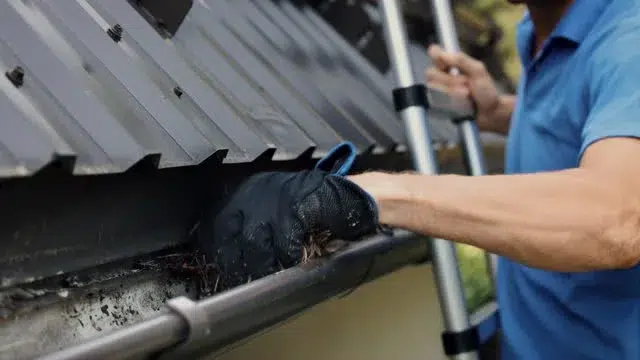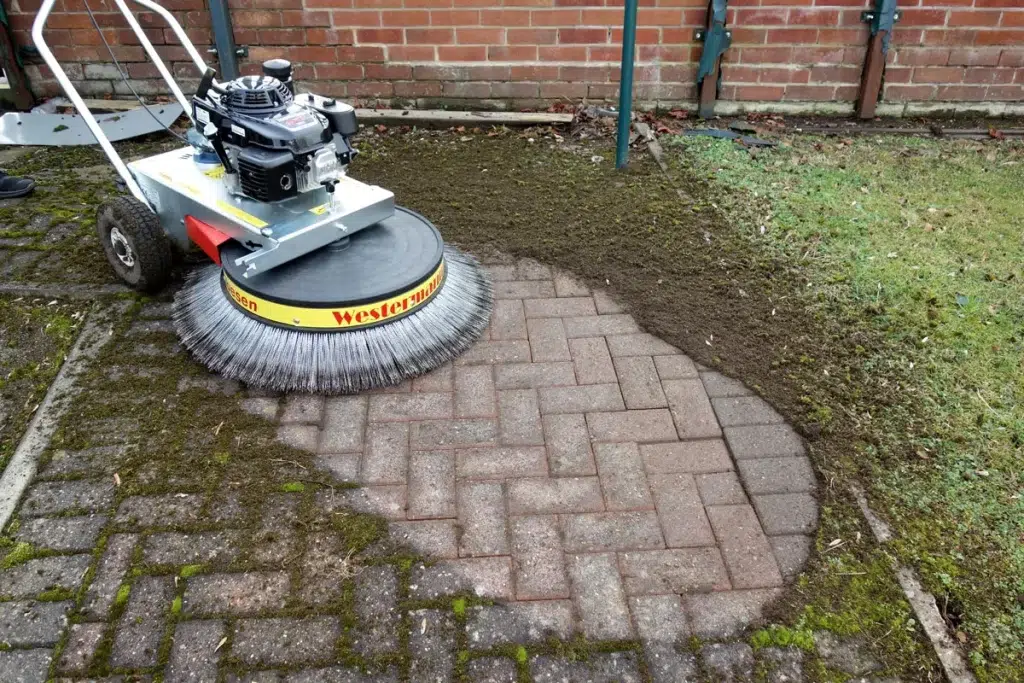
Let’s be honest—cleaning the roof isn’t exactly what we dream of when we think about weekend projects.
However, just like your car or your bathroom, roofs need a little love too! So, how often should roofs be cleaned? (Spoiler alert: it’s not as often as you vacuum, but it shouldn’t be ignored either.)
A good cleaning schedule can help prevent pesky moss, algae, and leaves from turning your roof into a science experiment.
Table of Contents
Why Regular Roof Cleaning Matters
Imagine your roof as the hat of your house. Over time, if you let it get too dirty, not only does it start looking a bit shabby, but it also loses its protective charm.
Regular roof cleaning is like giving your home a quick facelift, boosting curb appeal and preventing damage that could cost you a lot more down the line.
Plus, a clean roof has a better chance of surviving all that nature throws at it—rain, snow, sun, and even the occasional bird with an overactive digestive system.
What Determines How Often Roofs Should Be Cleaned?
Now, you’re probably wondering why your neighbor’s roof always looks spotless while yours seems to turn green every spring. It all depends on a few factors:
Climate
Living in a rainy area? Moss and algae love it here too! If your region is often wet, you might need to clean your roof more frequently to keep that “natural” green color off.
Roof Material
Not all roofs are created equal. Shingles, tiles, and metal roofs have different cleaning needs. For example, metal roofs can stay cleaner longer, while asphalt shingles may require a bit more attention.
Checkout this guide for roof cleaning for different roof types!
Surrounding Vegetation
Got trees nearby? They’re beautiful, but they also drop leaves and, worse, sap. The more trees you have, the more debris will accumulate on your roof, which can lead to mold and mildew growth.
Knowing these factors will help you create a roof cleaning schedule that makes sense for your home.
General Roof Cleaning Recommendations for Homeowners
As a general rule, most roofs should get a good clean once or twice a year.
If your roof is looking a bit grimy by the start of spring or is weighed down by leaves in the fall, it’s time for a cleaning.
However, if you live in an area where the weather is particularly damp, you might need to give your roof a bit more attention.
Annual Cleaning
If you live in a dry or moderate climate, an annual roof cleaning should do the trick.
Biannual Cleaning
For those in rainier climates (looking at you, Pacific Northwest), twice a year might be best to prevent moss and algae from taking over.
How to Know When Your Roof Needs Cleaning
Your roof has its ways of letting you know when it’s ready for a scrub. Here are a few signs that might indicate it’s time to pull out the ladder (or, better yet, call a professional):
Black Streaks or Green Patches
These aren’t trendy new roof designs; they’re signs of algae or moss. Black streaks are usually caused by algae, while green patches mean moss has moved in.
Piled-Up Leaves and Debris
If you can see leaves and debris from the ground, it’s a sign they’ve overstayed their welcome. This buildup can trap moisture, causing mold to form.
Standing Water
If you notice puddles forming on your roof, this could mean clogged gutters or downspouts. Water buildup can lead to leaks or other damage.
Curled or Lifted Shingles
Dirt and moisture can get under shingles, lifting them over time. If your shingles start looking like they’re doing a little wave, it’s time to intervene.
DIY vs. Professional Roof Cleaning: Which Is Best?
You might be tempted to DIY your roof cleaning—it seems simple enough, right? Just a hose and some elbow grease! Well, it’s a bit more complex than that. Let’s look at the pros and cons of DIY vs. hiring a professional.
DIY Roof Cleaning
- Pros: It’s cheaper and you get a little exercise.
- Cons: It’s risky, time-consuming, and can damage your roof if done incorrectly. Climbing a ladder with cleaning supplies isn’t for the faint-hearted (or those afraid of heights).
Professional Roof Cleaning
- Pros: Safe, effective, and you don’t have to lift a finger. Professionals have the right tools, like low-pressure washing equipment, to get the job done without causing damage.
- Cons: Costs a bit more, but think of it as an investment in your roof’s future. And hey, your Saturday remains free!
Tips to Maintain a Clean Roof Between Cleanings
You don’t have to wait until the roof is overgrown to take action. Here are a few maintenance tips to help keep things tidy in between professional cleanings:
- Trim Back Trees: Overhanging branches drop leaves, seeds, and who-knows-what-else onto your roof. Keep trees trimmed to minimize debris.
- Regularly Clear Gutters: Clogged gutters lead to water backup, which can cause leaks. Regularly clearing them will help keep your roof dry.
- Install Zinc or Copper Strips: These metals prevent moss and algae growth. If you’re okay with a bit of DIY, these strips are an easy way to extend the time between cleanings.
- Inspect After Big Storms: Storms can knock debris onto your roof or damage shingles. Give your roof a quick inspection after any big weather event to catch problems early.
Conclusion
Regular roof cleaning might not sound thrilling, but it’s one of the best ways to keep your roof looking great and functioning properly.
Aim for a schedule that fits your climate and property, and when in doubt, trust the pros. With these tips, you can keep your roof in top shape for years to come—and avoid that dreaded “jungle chic” look.



